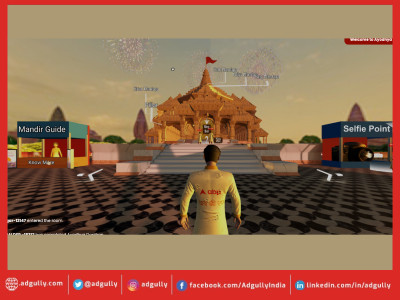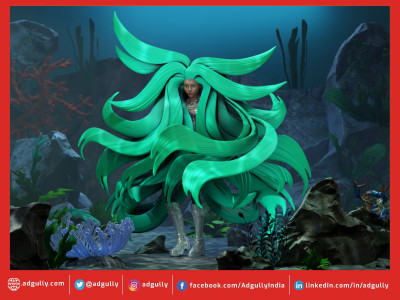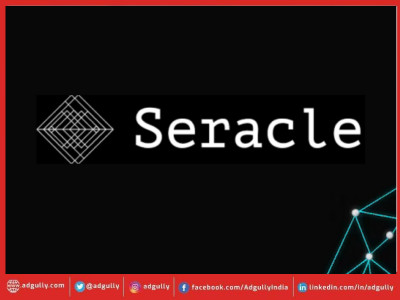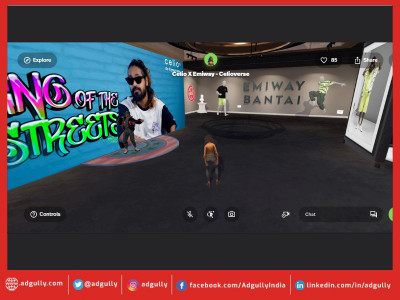Diving into the Metaverse: Unleashing Potential for Brands and Creators
Authored by Sachin Shah, Founder, The Hype Capital
Remember those viral videos of people fumbling in their VR headsets, their actions appearing bizarre and disconnected? While the sight might have induced chuckles, it inadvertently sparked a more profound question: is this a glimpse into our reality to come? As it turns out, the answer increasingly leaned towards an affirmative 'yes.' The Metaverse, a vast, interconnected network of virtual worlds, is no longer a figment of science fiction. Fueled by VR, AR, and various cutting-edge technology advancements, it's rapidly transitioning from a futuristic concept to a tangible reality, and brands and creators are noticing.
Market forces paint a clear picture of the Metaverse's burgeoning potential. According to Grand View Research, the global Metaverse market is estimated to reach $828.9 billion by 2030, growing at a phenomenal CAGR of 43.3%. This figure, more prominent than Switzerland's GDP, underscores the sheer scale of the impending digital revolution. Moreover, a PwC survey reveals that 52% of global consumers express interest in experiencing the Metaverse, with gaming and social interaction topping their list of desired activities. This indicates a receptive audience eager to engage with brands in innovative and immersive ways. Gen Z, already at ease navigating digital spaces, stands out as a particularly enthusiastic demographic. A Meta report highlights that 56% of Gen Z respondents believe the Metaverse will be an essential part of their future lives, making them a crucial segment for brands looking to stay ahead of the curve.
But what exactly is the Metaverse? Forget isolated video games or static online platforms. The Metaverse envisions a persistent, shared virtual space where users, represented by customizable avatars, can interact, create, and participate in experiences that transcend the physical world's limitations. Imagine exploring diverse virtual environments, owning unique digital assets, and connecting with others regardless of geographical location. It's not just about browsing virtual stores in 3D; it's about attending immersive concerts, collaborating on creative projects, and fostering meaningful communities around shared passions.
Brands Play a New Game: Engaging Audiences in the Metaverse
For brands, the Metaverse unlocks a treasure trove of marketing possibilities. Gone are the days of static websites and one-dimensional campaigns. Imagine hosting interactive product launches in captivating virtual showrooms, where customers can test products virtually and engage with personalized consultations. The Metaverse allows for deeper emotional connections and fosters brand loyalty through exclusive events, virtual rewards programs, and dedicated spaces for fans to interact and collaborate.
Some examples of brands and creators experimenting with it:
- Nike's Nikeland on Roblox, a virtual world with customizable avatars and mini-games, has attracted 27 million visitors and generated $185 million in sales.
- Gucci's Gucci Garden on Roblox, featuring limited-edition digital items, attracted 19 million visitors and sparked conversations about digital fashion's future.
- Starbucks had its Odyssey program, linking physical and digital experiences through NFTs, boasting over 2 million members and fostering a loyal community within the Metaverse.
Creators Craft Their Canvas: Building Businesses in the Metaverse
The Metaverse isn't just a playground for established brands; it's a haven for creators of all stripes to unleash their imagination and build thriving businesses within this burgeoning virtual ecosystem—design interactive games, educational simulations, or art exhibits that transport users to fantastical worlds. Imagine an artist creating a virtual gallery showcasing their work or a musician designing a concert venue where they can perform for a global audience. The Metaverse fosters entrepreneurship by allowing creators to sell unique digital assets like avatars, clothing, furniture, and more. This opens a lucrative market for 3D designers, fashion creators, and interior decorators. Moreover, creators can monetize their content by offering educational courses, hosting virtual workshops, or consulting services within the Metaverse. Think of a fitness instructor conducting immersive workout sessions or a language teacher holding interactive language lessons. The possibilities are as boundless as creativity itself.
But, with power comes responsibility, challenges and considerations:
- Accessibility: VR and AR hardware can be expensive, potentially limiting access for some users. Ensuring inclusivity and affordability will be crucial.
- Privacy and Security: Data privacy and security concerns within the Metaverse must be addressed to build trust and encourage user participation.
- Regulation and Standards: As the Metaverse evolves, clear rules and standards are needed to ensure a fair and equitable digital environment.
The Metaverse is still in its early stages, but the potential for brands and creators is undeniable. By embracing this new frontier, brands can forge deeper connections with consumers, creators can build thriving businesses, and everyone can participate in a more immersive and interactive digital world. As technology advances and the Metaverse matures, the possibilities are truly endless. The future is immersive, and it's time to start exploring the playground it offers.
Note: The information in this article is sourced from multiple online reports, articles and posts. Readers are suggested to do more profound research if needed.


















Share
Facebook
YouTube
Tweet
Twitter
LinkedIn